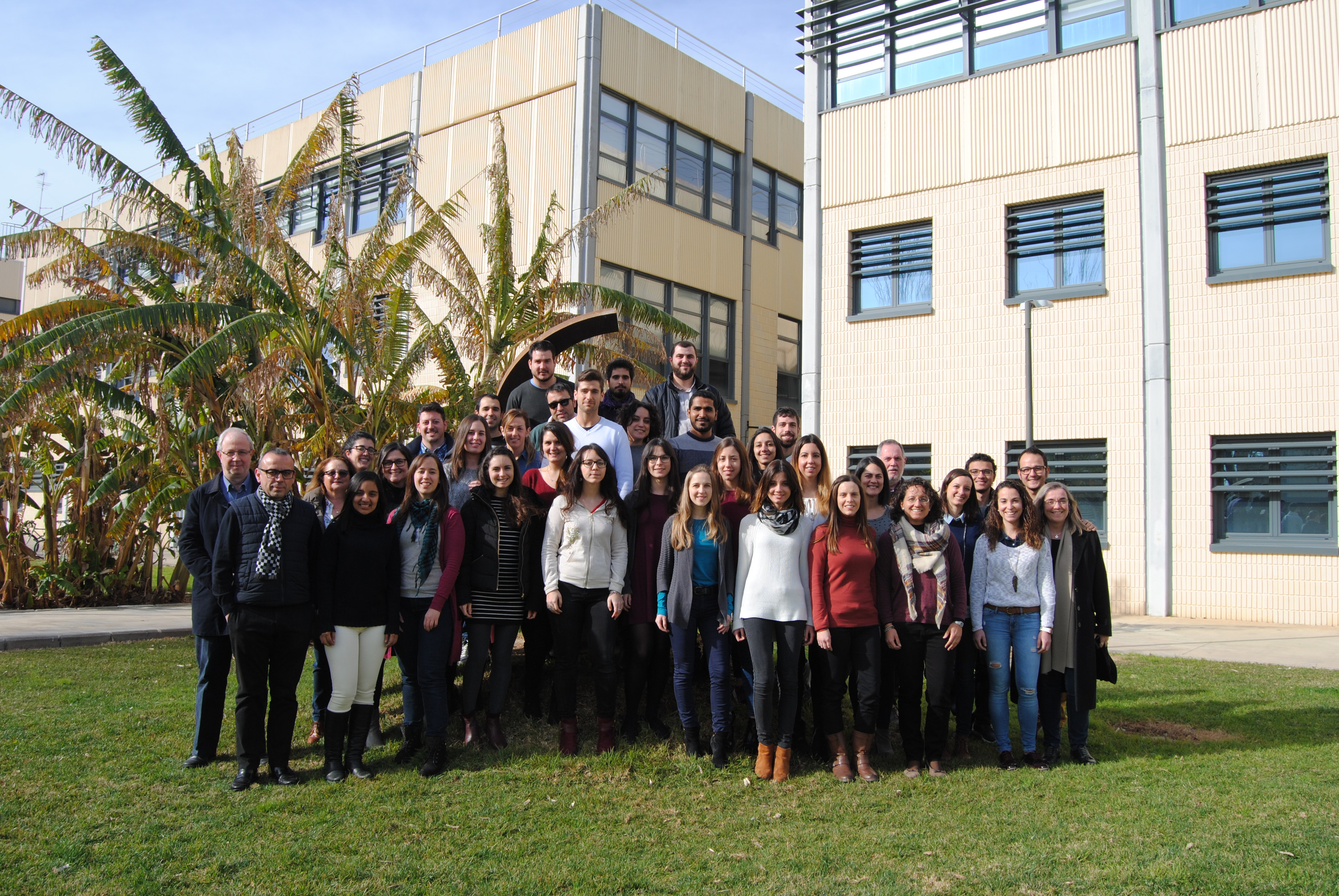Nanomedicine applied to Dermatology by Almirall, Leitat Technology Center & NANOMOL (NANBIOSIS U6)
NANOMOL (ICMAB-CSIC), a research group member of ICTS “NANBIOSIS”, more specifically of the Biomaterial Processing and Nanostructuring Unit (U6), announced today the launch of Nano4Derm, a research project in collaboration with Almirall, S.A and Leitat Technology Center, focused in nanomedicine applied to treat dermatological diseases. Within the framework of this research project, new innovative formulations containing nanoencapsulated active ingredients will be developed for the topical treatment of inflammatory skin conditions, such as Acne and Psoriasis.
Nano4Derm involves the development and physico-chemical and biological characterisation of nanocapsules containing active ingredients, and the generation of scalable formulation prototypes for manufacturing nanoformulations suitable for clinical trials. These innovative formulations will address current unmet needs and challenges, such as antimicrobial resistance, and provide improved topical treatments for Acne and Psoriasis, in terms of side effects, instability of active ingredients, and skin penetration.
Under the terms of the agreement, ICMAB-CSIC and Leitat research centers will be in charge of developing the different prototypes of nanocapsules containing the active ingredients while Almirall will be responsible for the development of formulations containing the encapsulated actives. Furthermore, Almirall and Leitat will evaluate in preclinical studies both the new nanocapsules and formulations in order to select the best solution to address the unmet medical needs in the topical treatment of Acne and Psoriasis.
This agreement will lead to the development of two types of nanocapsules: Quatsomes and Polymeric Nanocapsules. Quatsomes are lipid nanoparticles with higher colloidal stability than liposomes, which favors the production of high quality, pharmaceutical formulations. They are obtained from the DELOS-SUSP, a technology developed by researchers from the Nanomol group (ICMAB-CSIC) based on the use of supercritical fluids such as CO2. This technology has advantages over other manufacturing methodologies in terms of homogeneity and scalability, as it replaces the use of organic solvents by green solvents. Polymeric Nanocapsules are developed by the Leitat Technology Center, and provide versatility to the project as they can be designed with different drug release profiles depending on the needs being addressed.
This project is funded by the Spanish Ministry of Economy, Industry and Competitiveness (MINECO) through the announcement of the State Program for R&D&i (2016), orientated to the Society Challenges, modality RETOS-Collaboration 2016, and co-financed by FEDER funds from the European Commission.
About Nanomol (ICMAB-CSIC)
NANOMOL is a research group depending on the Institute of Material Science of Barcelona from CSIC, with wide expertise and recognized excellence in the synthesis, processing and study of molecular and polymeric materials with chemical, electronic, magnetic and biomedical properties. NANOMOL is also a member of Biomedical Research Networking center in Bioengineering, Biomaterials and Nanomedicine (CIBER-BBN) and of the technology transfer network TECNIO from ACC1Ó-Generalitat de Catalunya. The development by Nanomol of the different prototypes of nanocapsules will be performed in the ICTS “NANBIOSIS”, more specifically by the Biomaterial Processing and Nanostructuring Unit (U6) of the CIBER in Bioengineering, Biomaterials & NanomedicIne located at the ICMAB-CSIC.
About Leitat
Leitat is a multisectoral private technological center whose mission is to collaborate with companies and other entities to create economic, social and sustainable value, through R+D+2i projects and technological processes from innovation and creativity. Leitat is a brand of the private entity Acondicionamiento Tarrasense and is recognized by the Generalitat de Catalunya (ACCIÓ) and by MINECO.
The Division of Nanomedicine and nanobiosensors of Leitat develops nanosystems for therapeutic application in order to solve specific problems in safety and, absorption issues and improvement of the efficacy of some API. In addition, related to diagnosis the group develops nanoparticles for specific recognition of analytes for the improvement of the sensitivity and signal amplification of biosensor systems.
The Efficacy and Safety Unit of Leitat also participates in Nano4Derm project, which has extensive experience in the development and application of in vitro models for the toxicological and efficacy evaluation of diverse natural products, from the pharmaceutical, chemical, cosmetics and food industries. In the pharmaceutical sector, the Unit acts as a strategic provider in Drug Discovery and pharmaceutical development processes. In recent years this unit has been involved in the development and biological characterisation of micro- and nano-delivery systems for topical application.
About Almirall
Almirall is a global pharmaceutical company with a strong focus in Dermatology and Aesthetics with the mission of providing valuable medicines and medical devices to you and future generations. Our R&D is focused on Dermatology, with a wide range of programs including key indications. Through our innovative products, agreements and alliances, our work covers the entire drug value chain. Almirall is continually growing as a specialist company in a wide range of skin diseases, in order to cover our customers unmet needs.
Founded in 1943, headquartered in Barcelona, Spain, Almirall is listed on the Spanish Stock Exchange (ticker: ALM) and it has become a source of value creation for society due to its vision and the commitment of its long-standing major shareholders. In 2016, its revenues totaled 859.3 million euros and, with more than 2,000 employees, it has gradually built up a trusted presence across Europe, as well as in the US.


















